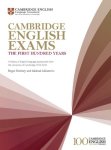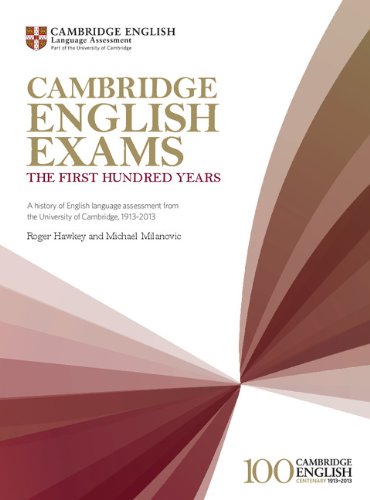Dropping through the door of the school this morning was a lovely bundle of goodies from CELA (Cambridge English Language Assessment): the latest copy of “Research Notes”, several posters and two books! I guess this is one of the perks of being a Cambridge test centre – the occasional freebie. The books are (1) Hawkey and Milanovic’s “Cambridge English Exams – The First Hundred Years” and (2) Weir, Vidakovic & Galaczi’s “Measured Constructs – A history of Cambridge English language examinations 1913 – 2012”.
You may have been able to spot a theme there…


Obviously, it’s not been possible to read the combined 1000 pages plus in any great depth so far, so what follows are really only initial impressions.
The first book comes across as a bit of a corporate hagiography. It is supremely glossy and full of lovely colour images to break up what would otherwise be quite a large amount of fairly dense text. The content does look interesting, for anyone who’s interested in these things, but the book seems to deal more with the evolution of the Cambridge brand, product range and corporate partners than anything else – I’m not entirely sure who the book is aimed at, or why they might want to read it. I was also quite surprised that this website not only gets a mention (on page 325), but that one of the diagrams from my “Changes to CPE” post is reproduced. It is always nice to know that someone rates your work highly enough to reproduce it and I should be quite clear that it was attributed to this website; nevertheless it raises some interesting questions about copyright and reproduction permissions. When an organisation like Cambridge University Press reproduces content without having asked permission, does that make it OK for the rest of us to do it as well? (NB: I have not sought permission from Cambridge to reproduce the images in this post…) To read more on this topic, check out Sue Lyon-Jones’ post “Copyright, Plagiarism and Digital Literacy“.
The second book, Measured Constructs, is to my mind the much more interesting of the two, though it is also likely to appeal to a specialist audience. It offers an incredibly in depth description of the evolution of the Cambridge language exams series, from a construct perspective – in other words how the testing of language knowledge and language skills has changed over the years. In achieving this, the book delves into the “significant, theoretical and practical advances in pedagogy and socio-political developments” within ELT since the turn of the last century. Thus, as views on the nature of language acquisition, learning and purpose have shifted – so have the constructs of the exams and so it is possible to read this book not only as the evolution of the language exam but as a history of ELT itself. That said, it is likely to be of more use to those with an academic interest in testing and evaluation.




1 Pingback